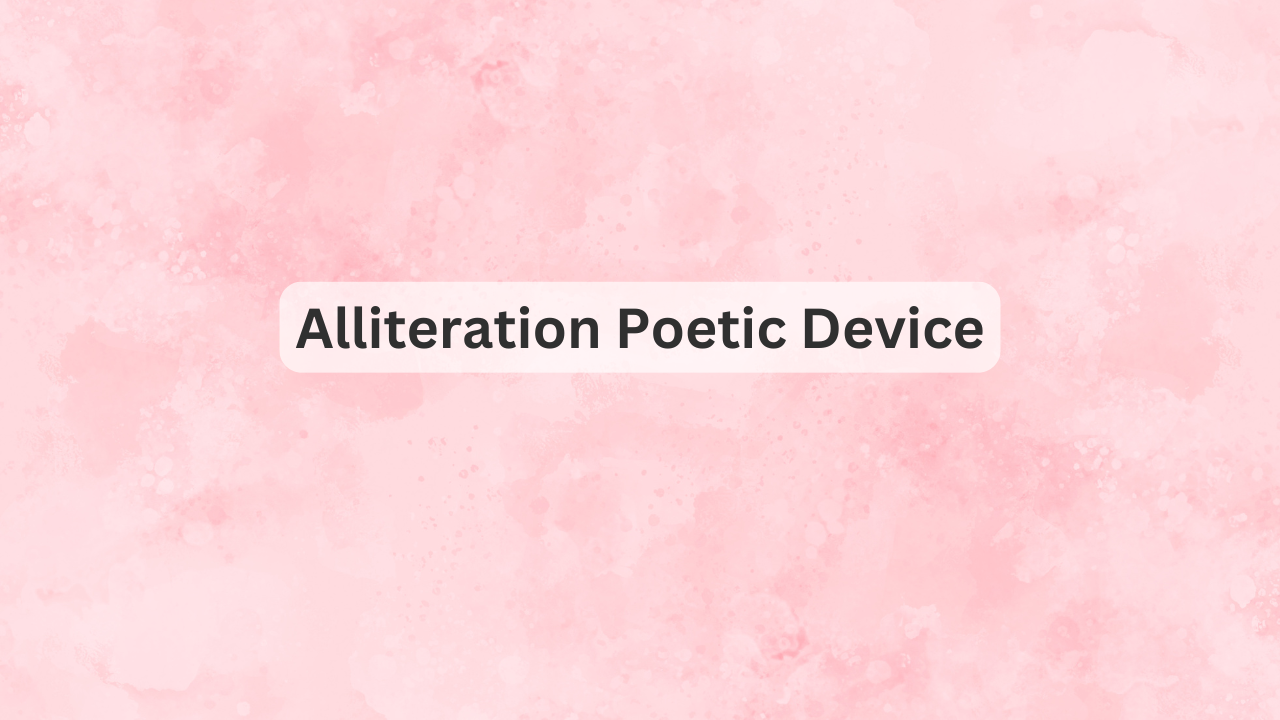Say hello to alliteration, the poetic device that makes sentences sing by repeating the same consonant sounds at the beginning of closely connected words. You know those tongue-twisters like “Peter Piper picked a peck of pickled peppers”? Yep, that’s alliteration showing off its rhythmic chops. Alliteration is the secret sauce that gives poetry (and sometimes prose) its musicality and charm, making language feel smooth, snappy, and sensational—see what I did there?
Let’s dive into the world of alliteration, where repetition creates rhythm, and the sound of language gets a serious style upgrade.
What Is Alliteration? A Quick Definition
Alliteration is when the same consonant sound is repeated at the beginning of words that are close together in a sentence or line of poetry. It’s often used to create a pleasing flow or emphasize a particular mood or idea. Think of it as wordplay with a beat.
For example:
“Sally sells seashells by the seashore.”
The repetition of the “s” sound ties the whole phrase together, making it stick in your mind and dance off the tongue.
Alliteration Examples That Pop (And Crackle!)
- “Whispering winds whistled through the willows.”
(You can practically hear the breeze here, right?) - “Lazy lions lounge in the late afternoon light.”
(Clearly, the lions are chill, and so is this sentence.) - “Bouncing bunnies brought bright, blue balloons.”
(Because why not throw a rabbit party with balloons?) - “Fred’s frozen fries failed to fry fully.”
(Poor Fred—an alliterative culinary catastrophe.)
Why Alliteration Works: It’s Like Poetry’s Catchy Chorus
Alliteration is musical by nature, which makes it perfect for poetry, slogans, and even everyday conversations that need a little pizazz. By repeating the same sound, you can create a rhythm that’s memorable and fun, drawing readers in with a sense of flow. It’s a great way to emphasize ideas, set a mood, or just add some playful punch to your words.
Plus, alliteration makes writing easier to remember and more engaging to read. After all, who could forget good ol’ “Big bad wolf” or “Mickey Mouse”?
Frequently Asked Questions
Is alliteration only used in poetry?
Nope! While alliteration is a favorite in poetry, it’s also common in advertising, branding (think: Coca-Cola), and tongue-twisters. Anytime you want to make language more engaging or catchy, alliteration is your friend.
What’s the difference between alliteration and assonance?
Alliteration is the repetition of consonant sounds, while assonance is the repetition of vowel sounds. Example of assonance: “The rain in Spain falls mainly on the plain.”
Can alliteration be used in everyday writing?
Absolutely! Whether you’re writing poetry, an email, or even an Instagram caption, throwing in some alliteration adds flair and makes your words more fun to read.
Conclusion
Alliteration is the poetic device that brings rhythm, repetition, and a dash of fun to language. Whether you’re creating catchy slogans or crafting memorable poems, alliteration gives your words a musical quality that sticks in the mind. So go ahead, try sprinkling some perfectly playful phrases into your next sentence—you’ll be speaking like a poet in no time!

Thank you for sharing indeed great looking !
Nice i really enjoyed reading your blogs. Keep on posting. Thanks
Nice i really enjoyed reading your blogs. Keep on posting. Thanks
convert vhs to digital
Thank you for sharing indeed great looking !
The information shared is of top quality which has to get appreciated at all levels. Well done…
A great post without any doubt.
Nice i really enjoyed reading your blogs. Keep on posting. Thanks
Nice i really enjoyed reading your blogs. Keep on posting. Thanks
Nice i really enjoyed reading your blogs. Keep on posting. Thanks
Thank you for sharing indeed great looking !
Thank you so much for sharing this wonderful post with us.
Thank you so much for sharing this wonderful post with us.
Thank you so much for sharing this wonderful post with us.
Thank you for sharing indeed great looking !
Thank you so much for sharing this wonderful post with us.
Thank you so much for sharing this wonderful post with us.
Thank you for sharing indeed great looking !
A great post without any doubt.
Thank you for sharing indeed great looking !
The information shared is of top quality which has to get appreciated at all levels. Well done…
A great post without any doubt.
Thank you so much for sharing this wonderful post with us.
Thank you so much for sharing this wonderful post with us.
The information shared is of top quality which has to get appreciated at all levels. Well done…
Thank you for sharing indeed great looking !
Nice i really enjoyed reading your blogs. Keep on posting. Thanks